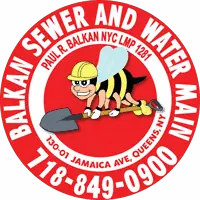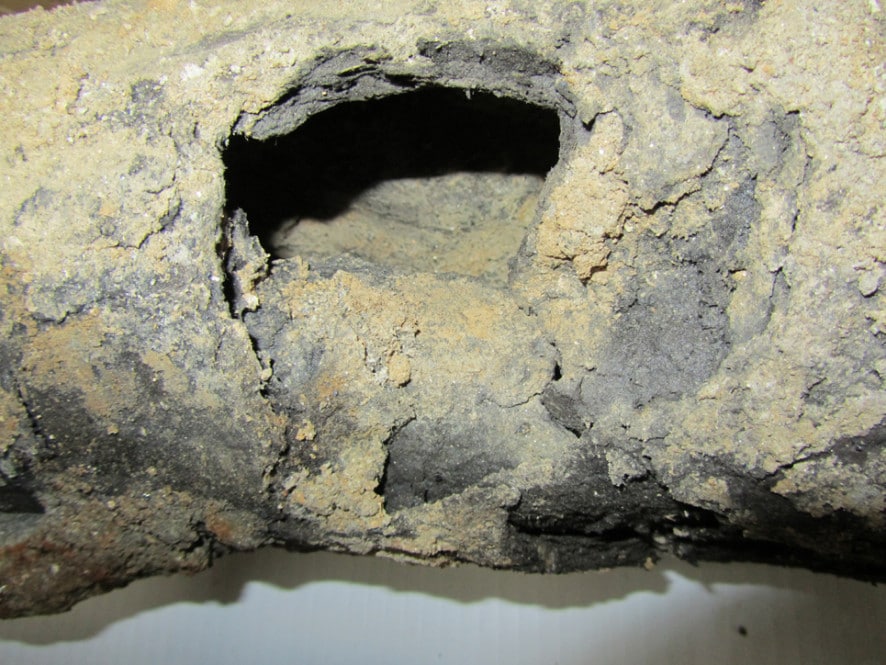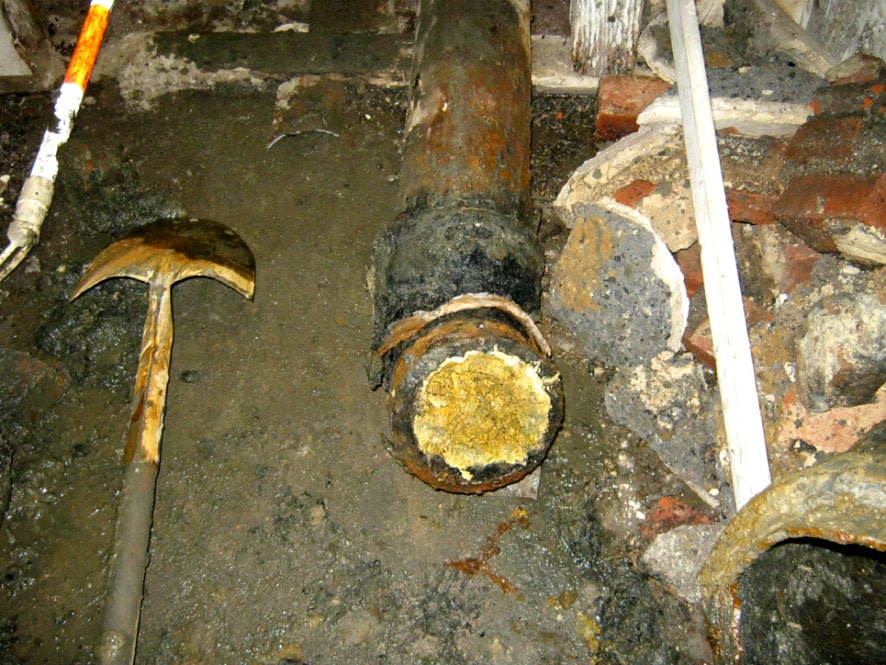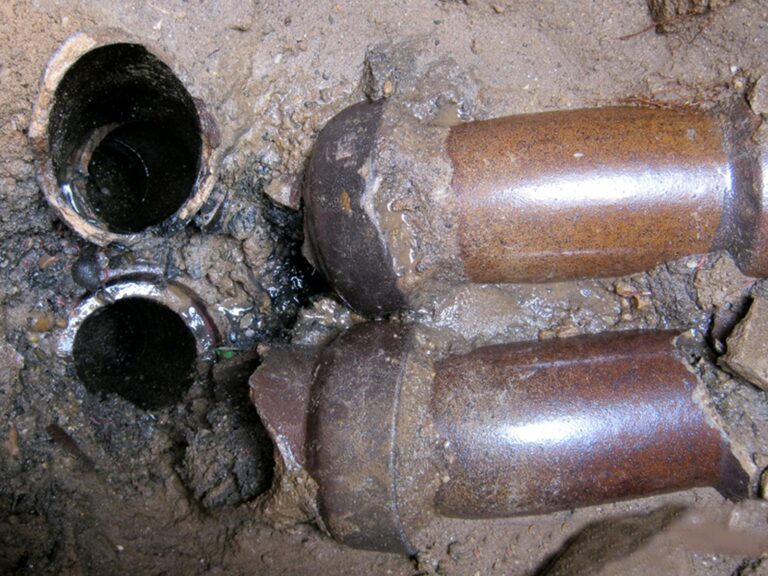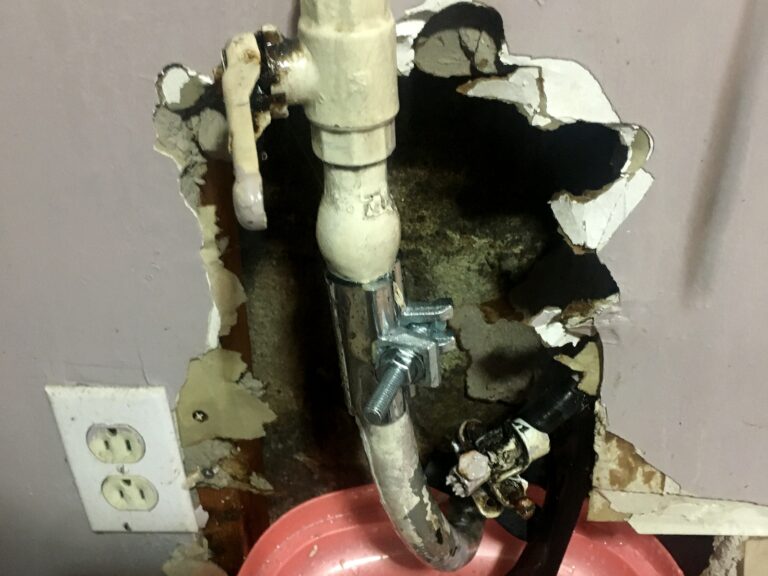Sewer problems on a house sewer can be confusing for the typical property owner. Problems can be both misunderstood and misdiagnosed. But more importantly, incorrect advice can be given on how to correct the defect. An incorrect diagnosis can result in unnecessary excavation work, and failing to correct the actual sewer problem. Thousands of dollars can be unnecessarily wasted when sewer problems are not handled correctly.
If you are a homeowner of property owner, many times you can feel at the mercy of a contractor. You may feel pressured to simply ‘give in’ to get work started to solve your sewer problem. You should know that there are four basic sewer problems that you might encounter on your home sewer line. Three of them can make a drain line repair necessary, one is a minor fix.
Needless to say, if you are a homeowner or property owner, it is extremely helpful to understand each of the four types of sewer problems. Accurate information helps you to choose the proper course of action. A list of the four most common sewer problems follows, with an easy-to-understand explanation as well.
1. Roots in a Sewer Line is a common Sewer Problem
Roots from trees or shrubs growing into a sewer pipe are the most common of the different sewer problems a homeowner will face. This usually happens with clay sewer pipe, as extra heavy cast iron pipe is much less susceptible to root infiltration. The process for joining cast iron soil pipe is far superior to that of vitrified clay pipe. Having water tight joints is usually enough to prevent root infiltration.
When roots do get inside a pipe they usually grow in at a number of points, not just one spot. Unfortunately, if neglected the hair like roots that initially grow in will develop into much larger roots. As roots grow larger they will then eventually break the pipe. Once fully blocking the pipe, it is very hard and costly to attempt to cut roots out, or to treat your sewer line with chemicals.
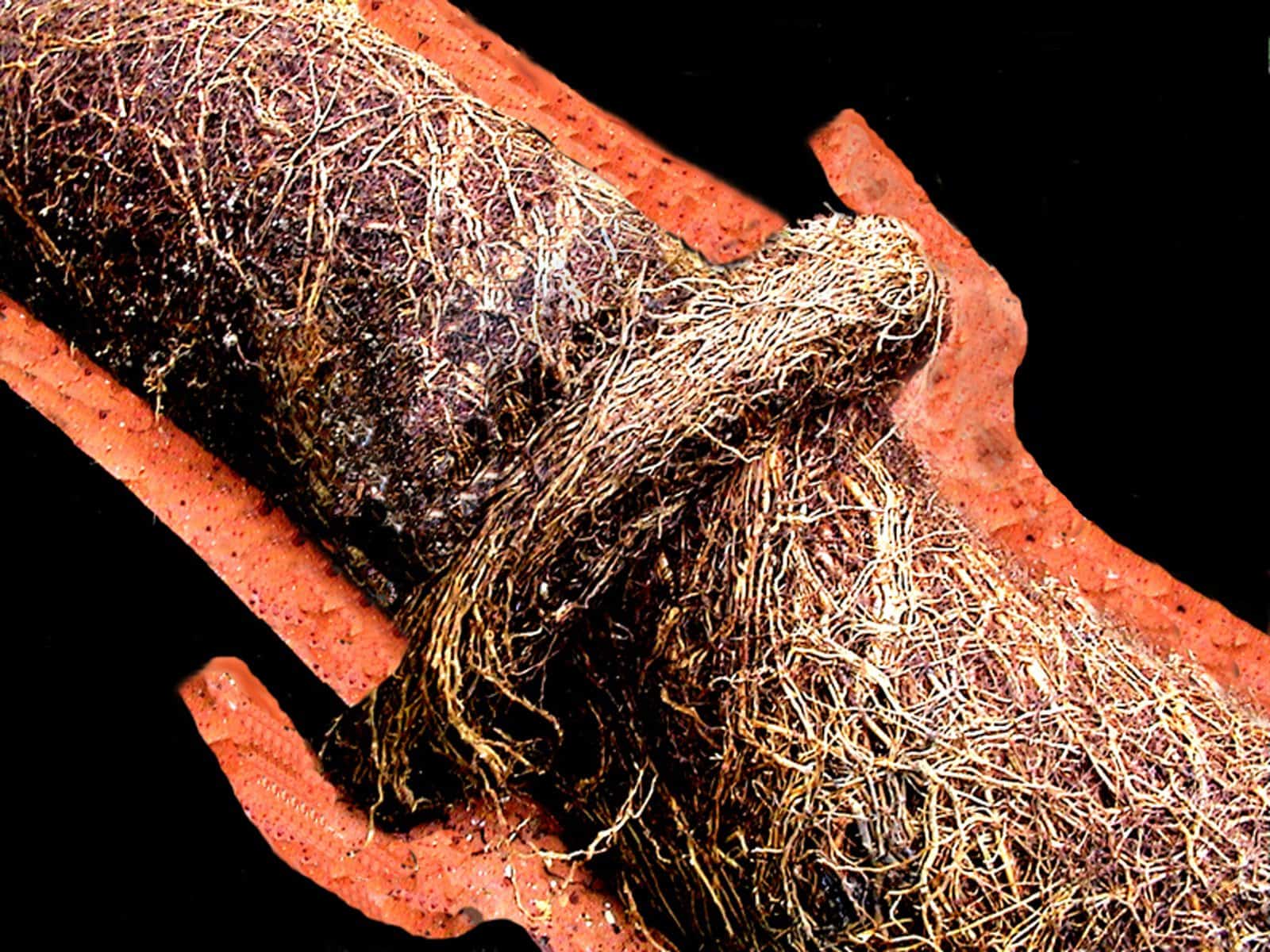
Remedies for roots in your sewer line
To give a chemical treatment to the house drain would require at least some flow of water inside the pipe, it cannot be fully blocked. If copper sulfite crystals (or a similar compound or product) are used at the initial signs of root infiltration, costly cleanings and sewer repairs can be avoided or greatly postponed. [Read more about Tree Roots In Sewers and proper treatment]
If roots have completely blocked a house sewer, and have been neglected for a long period of time, the only recourse may be to replace the entire sewer line. As stated previously roots typically enter an underground drain line in multiple places. In some cases, extensive water jetting with a specialized head can cut out roots. But if your house sewer is defective, the roots will grow back in again.
In many cases replacing only one section of your sewer line can end up being only a short-term fix. An improper spot repair can be a great waste of money, and not a permanent solution. However, in many cases a spot repair, coupled with high pressure water jetting, can provide a relatively long-term solution. A HD sewer video, and the opinion of a trusted sewer contractor, can help you determine what course of action is best for your situation.
Sewer lining is illegal in NYC
Another repair to avoid would be lining the house sewer, which is illegal in all of NYC. Placing a lining around existing root infiltration is an act of foolishness, and attempting to completely clear out extensive root growth can be next to impossible. Only a seasoned sewer professional will know the best course of action.Trying to avoid the correct job can often cost more than the correct job itself.
2. Crushed or disconnected sewer pipe problems
Unlike tree root issues, a sewer line can be damaged in one particular area for a number of reasons. In this particular case, repairs can be made in that particular area. These type of repairs are referred to as “spot repairs”. In some cases improper backfill can result in settlement and breaking of the pipe. Or the pipe being crushed by rocks placed on top of it. In other cases, inferior materials may have been used, as pictured above.
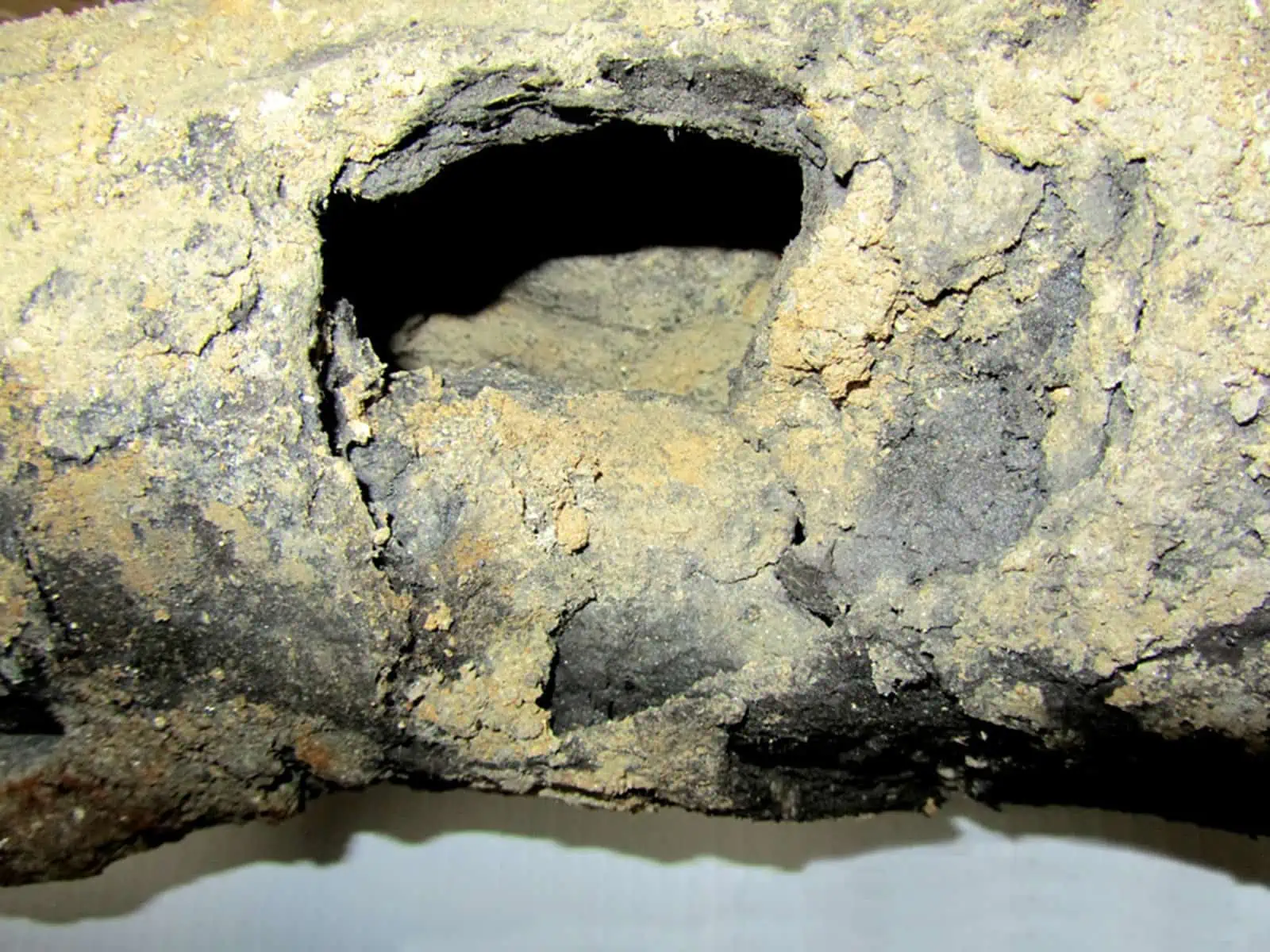
The pipe pictured above is Orangeburg Pipe. It is frequently found in NYC in the Bronx. Made from wood pulp and tar, it actually compresses once under pressure. Orangeburg pipe also deteriorates when exposed to moisture, which obviously all sewer pipe is exposed to.
In other cases a leaking sewer joint can cause the soil under the pipe to wash away. After time the pipe joints can separate due to the settlement of sub soil under the pipe. The weight of the ground on top of the pipe only accelerates the problem.
Determining the location of a sewer problem defect is vital
The main and most important issue with attempting a sewer repair is determining the exact location of the defective pipe and it’s location. If the point of the defect is just outside the foundation wall, then the location of the pipe defect is not an issue. If the break is at the point of connection to the public sewer, then city sewer records would have to be obtained. Always remember that house sewer lines do not necessarily go in a straight run.
Excavating in the roadway in the wrong location can be an extreme waste of money. It can alos result in heated contractor and client disagreements. Obtaining public records and carefully marking out and verifying correct locations ahead of time is vitally important. Obtaining proper sewer records may save the wasting both time and money. In many cases modern sewer equipment, such as HD sewer cameras, can pinpoint the location of sewer problems..
In areas where sewer lining is legal, which does NOT include NYC, broken or crushed pipe would not be a candidate for lining. Property owners should always be aware of unscrupulous contractors touting repair methods that are both not approved, nor based on sound plumbing practices. Always verify licensing and insurance prior to making a hiring decision.
3. Back pitched house sewer
A drain line works on the principal of gravity, that is that water runs downhill. Therefore no mechanical devices are needed, such as pumps. Backpitched pipe in a drain system can occur for two main reasons. Settlement in one particular area can occur, or a lack of pitch available for the house sewer that was installed. There is a 3rd cause, an original improper installation. Yet another reason to hire none but licensed and reputable sewer contractors.
Settlement of pipe on one area
In rare cases a backpitch problem can be due to settlement of the pipe in one particular area. If that is the case, it can be corrected by making one excavation approximately 8′ to 10′ long and replacing those affected sections of sewer pipe.
Proper pipe support is vital. That can be accomplished by placing crushed stone under the pipe, or supporting each joint with solid blocks.In most cases the typical backpitch problem is more difficult to properly address. A typical backpitch problem involves a greater issue with the entire drain system. Therefore it also involves more than a spot repair
An overall lack of pitch
More typical when a drain fails to run off properly is a lack of available pitch. That means that when the line was originally installed there was not enough difference in elevations from the building to the point of the connection to the public sewer for the drain to work properly by gravity.
Instead of addressing the problem at that time, contractors frequently mistakenly or intentionally install the house sewer with sections of it backpitched. Such a drain can in some instances function for years, slowly building up grease and debris, until frequent cleanings are required.
Eventually a line without proper pitch will fail. In other cases, due to poor workmanship, an extreme amount of pitch is placed on certain sections of the pipe, until there is not proper pitch available for the rest of the line. In these instances of a backpitched pipe careful analysis is required prior to repairing the system.
Solutions for a lack of pitch on a home sewer
If there is not an adequate difference in the elevations from where the drain exits the building to where it connects to the public sewer there are two solutions. One solution is to raise the house drain inside the building to create enough of a difference in the elevations. If raising the house drain is not feasible, the second solution is to install an ejector pump to pump the waste water from the house drain to a higher elevation. The house sewer can then be raised, with proper pitch, to accept the flow of wastewater form the pump.
In both of the above cases the house sewer must be replaced from the inside front of the house to at least the point where proper pitch can be obtained. In short, a spot sewer repair is unlikely to correct a lack of slope on your sewer line.
4. Sewer gas smell inside a house

A sewer gas smell is probably the most easily corrected of all house sewer problems. It does not usually require any excavation work, or an extensive repair to correct. Yet it is one of those sewer problems that people tend to needlessly live with. Typically the smell of sewer gas inside a house is from a house trap that has loose caps or missing covers. The main purpose of a house trap is to have a water barrier blocking sewer gases from entering a house. Leaving the trap covers open or loose defeats the entire purpose.
Simply replacing the trap covers or tightening the existing trap covers will solve the problem. In some cases when a house is left unoccupied for awhile the trap may dry out. Just opening a faucet and running some water down a drain will fill the trap and solve the problem.
Sewer gas smell outside a house
In other cases a sewer gas smell may be evident outside the house. This is typically from roof leader lines or outside area drains. These drains are connected to the house drain outside the house and may not have traps.
However, all plumbing drain connections should be trapped to prevent sewer gas from escaping. This also includes connections outside the house. In some cases where it has not rained for a while, the traps may have dried out. Simply pouring some water into the pipe before the trap will alleviate the sewer smell. [Read more about house sewer traps]
A final word of advice about sewer problems
Sewer work is a specialty field within the plumbing industry itself. It is not legally allowed, or best performed by sewer cleaners or handymen. Likewise those with a lack of experience, expertise, licensing, or insurance should not be trusted to perform sewer repair or replacement work.
Only highly skilled, licensed, and insured sewer contractors should be entrusted to analyze, understand, and undertake corrective work for your house sewer problems. Being a sewer contractor is a specialty field within the licensed plumbing industry.
